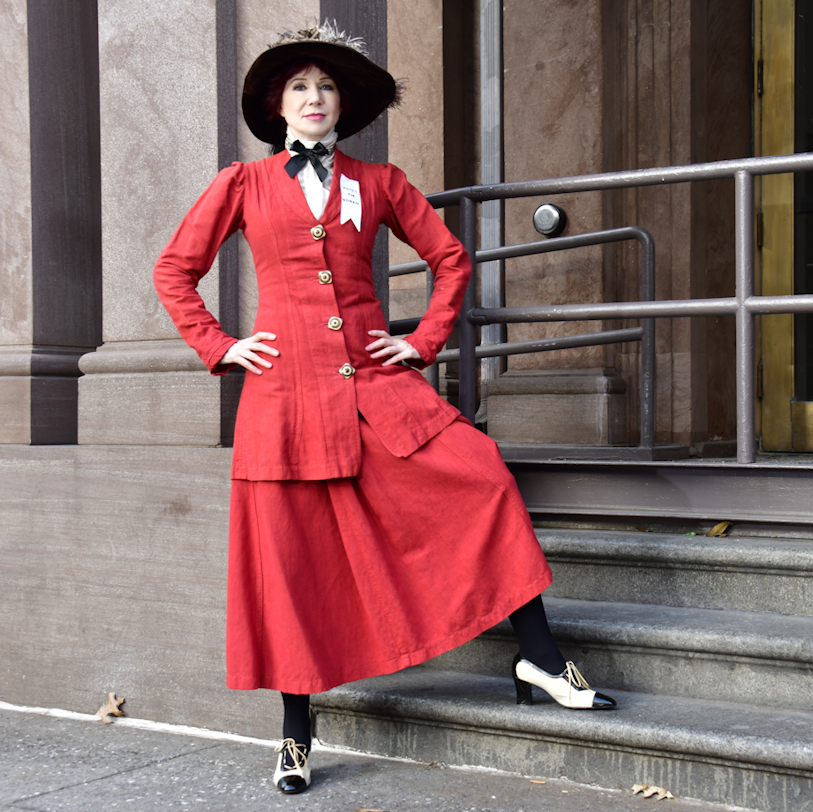
I have exciting news! I recently passed the Naturalization Test for U.S. Citizenship! I will be honored to swear allegiance to the United States of America and the U.S. flag on January 31. As I consider this country’s continuous striving towards the goals of life, liberty, and the pursuit of happiness for all, and I think of the hundreds of Americans I know, as well as the thousands I encounter on the streets and subways every week, I feel very proud to be another carrot-top in this wondrous melting pot.
When I studied American history and civics for the exam, I was fascinated to learn about the principles of American democracy, beginning with the Constitution and its amendments. What drew my attention in particular was the timeline of amendments, and especially with regards to the democratic right to vote.
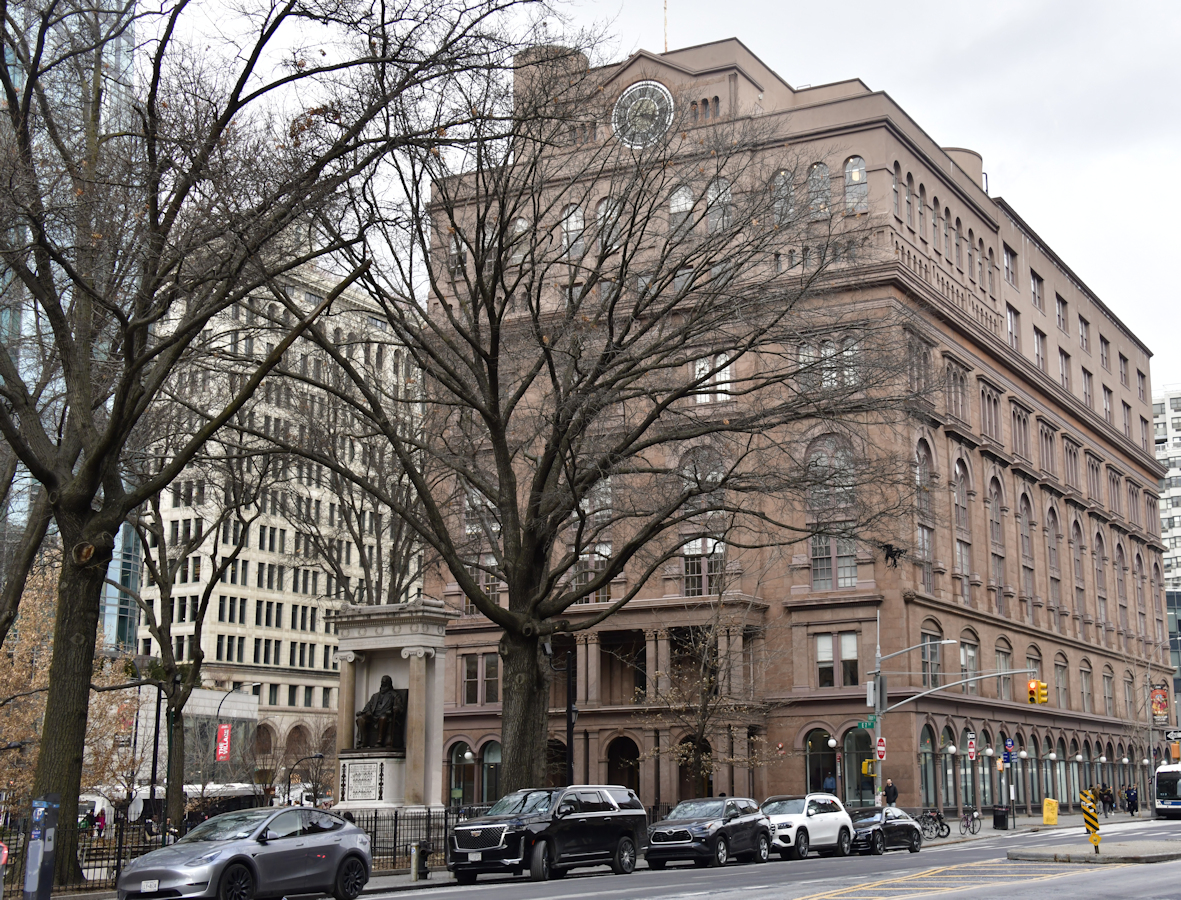
Amendments to the U.S. Constitution
The First Amendment guaranteed freedom of speech, of religion, of assembly, of the press, and to petition the government. The Twenty-Seventh, regarding Congress members’ salaries, was ratified in 1992 but was originally proposed in 1789! In between were 25 amendments to the supreme law of the land, including the Bill of Rights (Amendments 1 to 10, all in 1789), the abolishment of slavery, the enactment and repeal of Prohibition, and three expansions of voting rights.
I noted with interest that 1870’s 15th Amendment prohibits the denial of the right to vote based on race, color, or previous condition of servitude. But this didn’t come into full force until almost a century later. Fifty years later, in 1920, the 19th Amendment granted women the right to vote. However, many women of color and indigenous women were still denied this right.
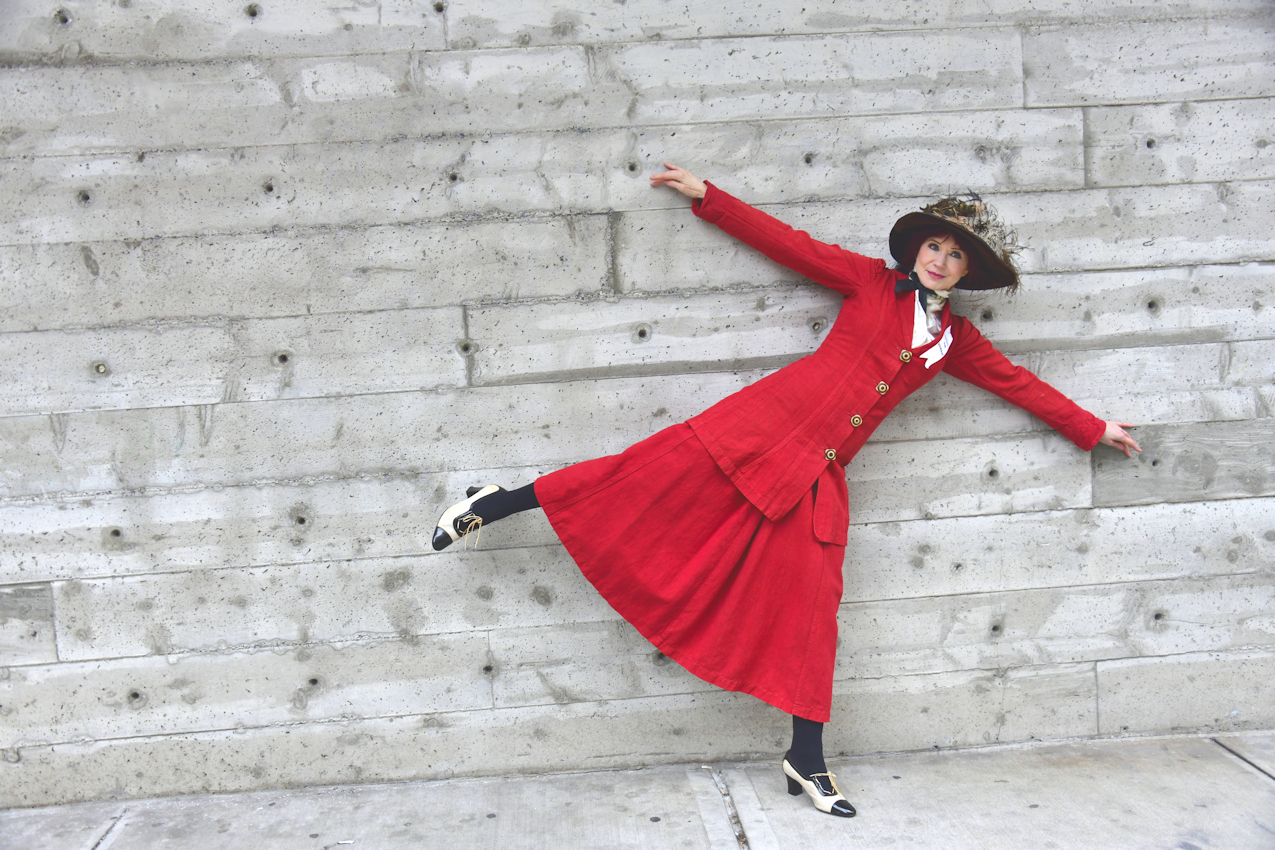
U.S. Voting Milestones
The Voting Rights Act, passed in 1965, protected the rights of millions of black voters, Native Americans, Asian Americans, and Latinx voters, and was considered one the greatest achievements of the Civil Rights Movement. The 26th Amendment, ratified during the Vietnam War, in 1971, lowered the voting age to 18 years. Clearly, the right to vote is one of the most fundamental principles of democracy. It’s something I’ve always taken for granted, but living in New York has expanded my awareness.
Interestingly, in 1776, as the colonies became the Unites States of America, women who met certain requirements had the right to vote in Massachusetts, New York, New Hampshire, and New Jersey. This changed in 1787, when all states except for New Jersey denied voting rights to women. New Jersey followed suit in 1807. From that point forward, it was an uneven but persistent battle, occurring simultaneously around the world, to regain the right to vote.
And in case you were wondering, denial of these rights is rooted in Athenian democracy (which began around the 6th century BCE), in which only men could vote. Despite what some of us were told, it was not “always this way.”
There is archaeological evidence that many pre-monotheistic cultures around the world were matrilocal, matriarchal, or egalitarian. In fact, a few days ago the New York Times published an article about new DNA evidence of a matrilocal Celtic tribe that lived in England 2,000 years ago! I didn’t learn that it was not “always this way” until I took a Women’s Studies course at university.
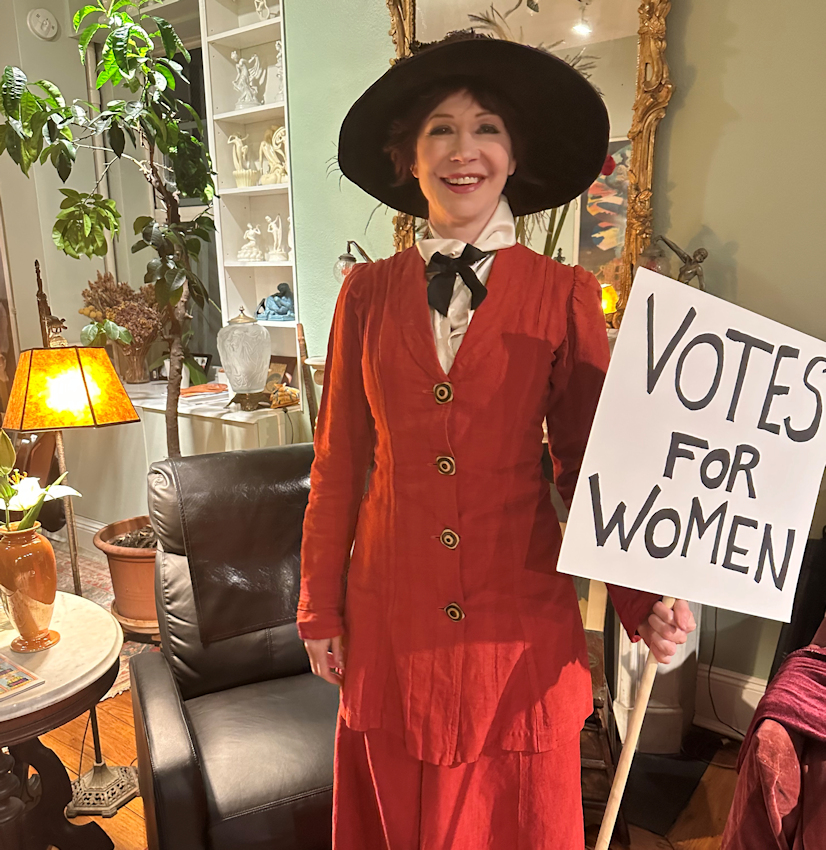
Fighting for Suffrage in the U.S.
The fight for women’s suffrage (the right to vote) began in 1840 in the U.S., when the National American Women Suffrage Association formed. In 1848, Elizabeth Cady Stanton drafted the Declaration of Rights and Sentiments, which she introduced at the Seneca Falls Inaugural Women’s Rights Convention. By 1878, an amendment for women’s suffrage was introduced in Congress. It didn’t pass.
Some states granted women the right to vote, beginning with Colorado in 1893. But things didn’t pick up momentum until the 1900s. As you might expect, New York was the nexus of many suffrage organizations, and the East Village’s Cooper Union was the location of many speeches and rallies.
On April 22, 1912, after the New York State legislature failed to grant women the right to vote, the Wage Earner’s Suffrage League staged a rally at The Cooper Union comprised of thousands of working women demanding suffrage. The sheer numbers showed how important this issue was becoming to women’s lives. The rallies, speeches, and marches continued until the women of New York State received the right to vote in 1917, three years before the 19th Amendment was ratified.
For a stirring account of the suffragette movement in New York, see Suffragists and Suffragettes by the Pulitzer Prize-winning author and historian Mike Wallace, written on the centenary of women receiving the right to vote in New York State.
So this month I wear a “Votes for Women!” ribbon to honor the women of the Wage Earner’s Suffrage League, their 1912 rally at Cooper Union, and the hundreds of thousands of suffragettes around the world who won us a freedom we might take for granted.
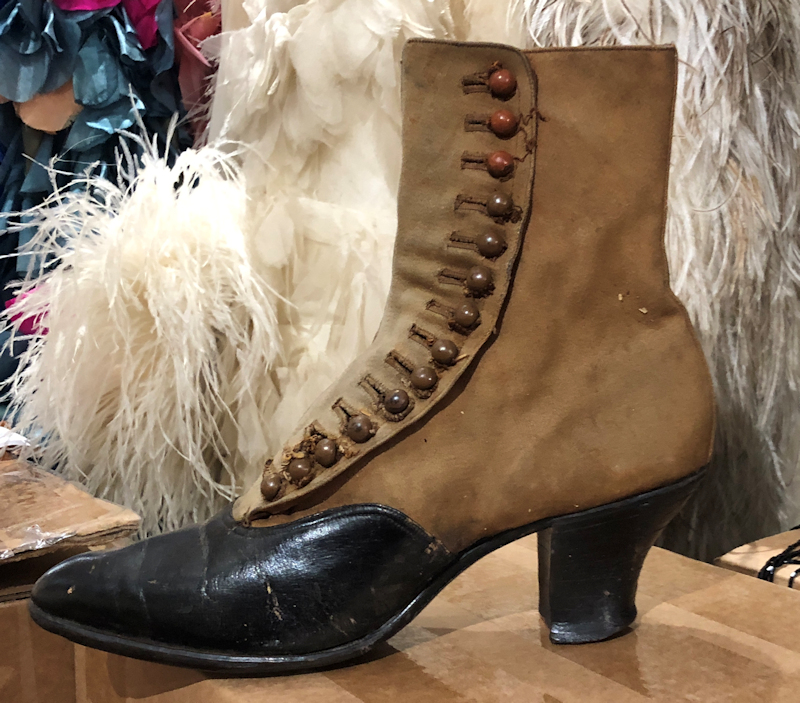
Global Suffrage
Of course, the U.S. fight for the right to vote didn’t happen in a vacuum. The fight was happening globally, and the U.S. movement was aided by suffragettes from the U.K. who provided training on tactics and strategy. Many countries beat the U.S. to the goal, though often, as in the U.S., they excluded racial groups such as Indigenous peoples and people of Asian or African heritage.
Here are some highlights (from Wikipedia’s Timeline of Women’s Suffrage) of the early wins for the right to vote. In most cases, unless noted, women’s right to stand for election came later.
- 1893 — New Zealand was the first self-governing country in the world in which all women had the right to vote in parliamentary elections.
- 1895 — The colony of South Australia allowed women to both vote and stand for election.
- 1902 — The newly-federated country of Australia enabled female British subjects resident in Australia to vote at federal elections and also permitted them to stand for election to the Australian Parliament, making Australia the first country in the modern world to do so.
- 1905 — Latvia, Russian Empire.
- 1906 — The autonomous Grand Duchy of Finland, which later became the Republic of Finland, was the first country in the world to give all women and all men (with no exclusions based on race) both the right to vote and the right to run for office.
- Finland was also the first country in Europe to give women the right to vote. The world’s first female members of parliament were elected in Finland the following year.
- 1915 — Denmark, including Iceland.
- 1916 — Manitoba, Saskatchewan, and Alberta. Alberta elected the first female lawmakers in the British Empire, in 1917!
- 1917 — British Columbia, Ontario, Canada (limited to war widows, women serving overseas, and women with family serving overseas).
- Russian Republic, Ukrainian People’s Republic, Belarusian People’s Republic, Estonia, Latvia, Lithuania, Crimean People’s Republic, Uruguay, and Netherlands.
- 1918 — Canada (limited to women over 21, “not alien-born,” and meeting provincially-determined property qualifications).
- Trinidad and Tobago, the U.K, many European countries.
- Azerbaijan Democratic Republic was the first predominantly Muslim country in the world to give equal rights to men and women.
- 1919 — Sweden granted conditional women’s suffrage during the Age of Liberty between 1718 and 1772! In 1919, full voting equality was achieved when women’s votes were valued the same as men’s.

Cooper Union
I would also like to put the spotlight on Cooper Union and its Foundation Building’s Great Hall, which has been a bastion of free speech, social activism, education, culture, and electoral politics for over 160 years. It was the largest meeting hall in New York City below 14th Street when it opened in 1859.
The Great Hall has hosted critical lectures and debates that have shaped New York City and our nation, including the earliest workers’ rights campaigns, the birth of the NAACP and the Red Cross, the women’s suffrage movement, and prominent thinkers from every field, including 11 aspiring, sitting, and former Presidents. In 1860, Abraham Lincoln gave his famous “Right Makes Might” address in the Great Hall, which propelled him to the United States presidency.
At the time of its erection in 1859, the Foundation Building was one of the tallest in lower Manhattan. Visionary founder Peter Cooper (1791–1883) required that it include a cylindrical shaft between floors in anticipation of an elevator—a device that had not yet been invented!
The Foundation Building now forms the apex of Cooper Triangle with the Village Voice’s 22-year residence on the left side of the triangle and The Cooper Union’s architecturally iconic 41 Cooper Square forming the right leg.
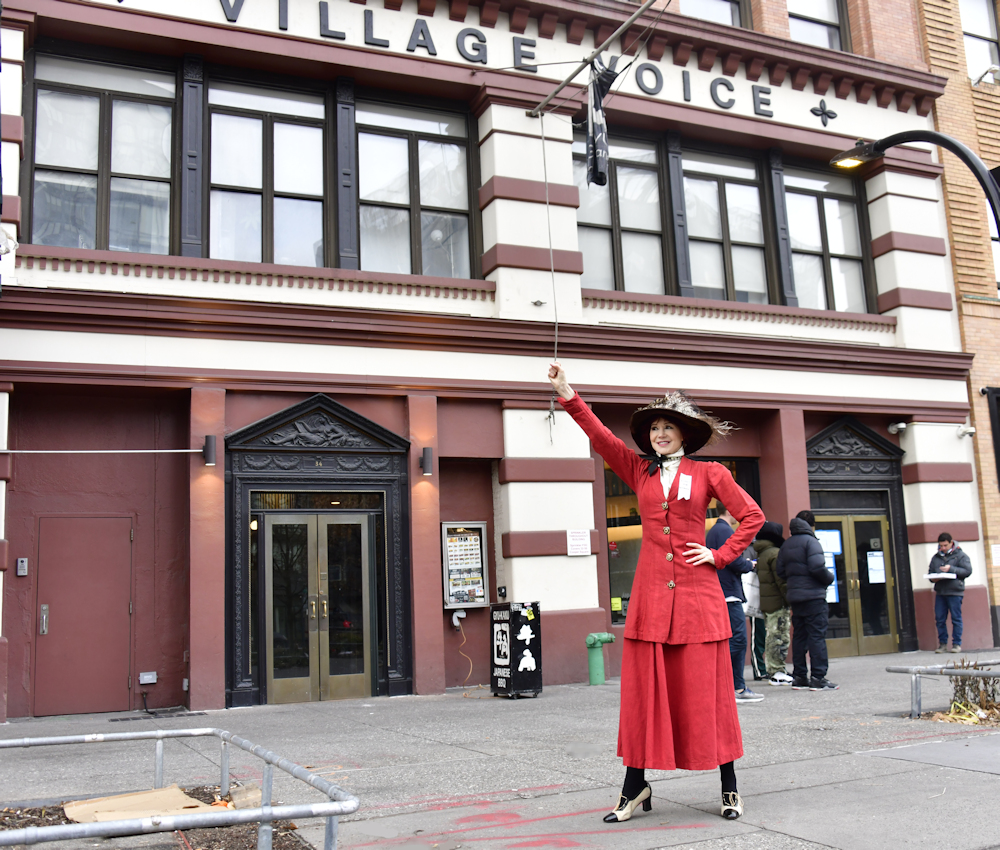
Peter Cooper
Peter Cooper was a philanthropist, industrialist, and inventor. He was a working-class, native New Yorker with less than a year of formal schooling. Yet he became one of the most successful American businessmen of his day, making his fortune in iron, glue, railroads, real estate, and communications. His inventions include the first trans-Atlantic telegraph cable (1858) and Tom Thumb, America’s first functioning steam engine (1829).
According to The Cooper Union website, Cooper also invented Jell-O (1845), with help from his wife, Sarah, who added fruit to his clarified gelatin. Other sites, including ThoughtCo, state that while Cooper invented and patented the method for making gelatin in 1845, Pearle Wait— a carpenter turned cough syrup manufacturer—and his wife May David Wait added the fruit to make it Jell-O in 1897, in LeRoy, New York.
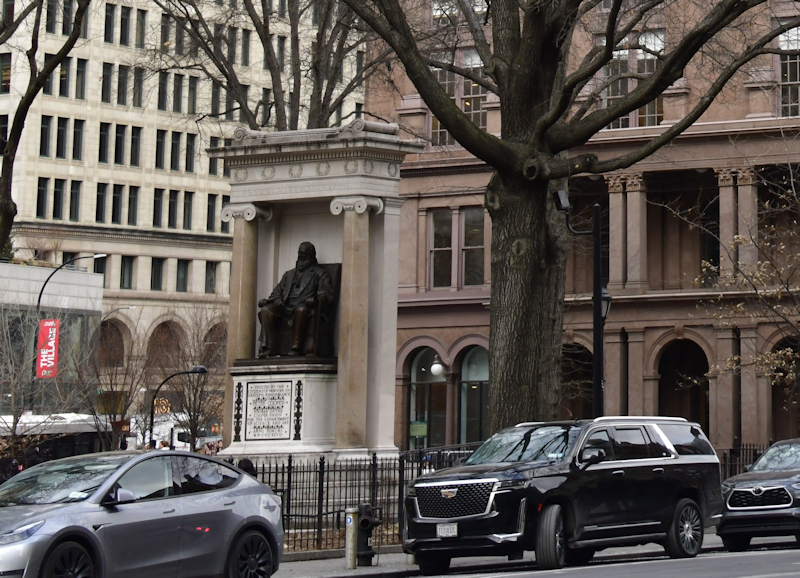
Ground-Breaking Educational Philosophy
From the start, Cooper Union was a unique institution, dedicated to Peter Cooper’s proposition that education is the key not only to personal prosperity but to civic virtue and harmony. He made his school free for the working classes. He took the revolutionary step of opening the school to women as well as men. There was no color bar at Cooper Union. Cooper demanded only a willingness to learn and a commitment to excellence.
Offering education in architecture, engineering, and art, with a shared core curriculum in the humanities and social sciences, The Cooper Union honors Peter Cooper’s belief that education should be accessible to all. The Cooper Union is recognized as one of the most affordable colleges in the country. They cover 100% of tuition by scholarship or grant aid for 55% of students, and their goal is to be 100% tuition-free by the 2028-2029 academic year.
The American system of continuing education for adults originated at The Cooper Union. Peter Cooper wanted to bring first-class educational opportunities to New Yorkers and he devoted his entire fortune to that goal. See their website for details about what’s on offer for the spring semester.
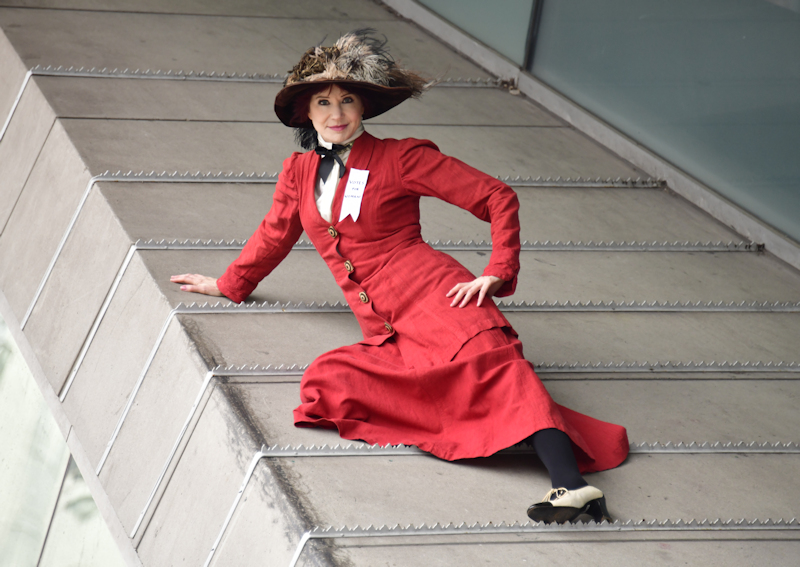
We Can Create Change
As another inauguration takes place, I think it’s important to remember our democratic roots and principles, and the values that we share. It’s even more important to know that we can fight and win to protect ourselves, our rights, and the rights of all the members of our society.
An abridged version of this article first appeared in Chelsea News and other papers in the Straus News group.
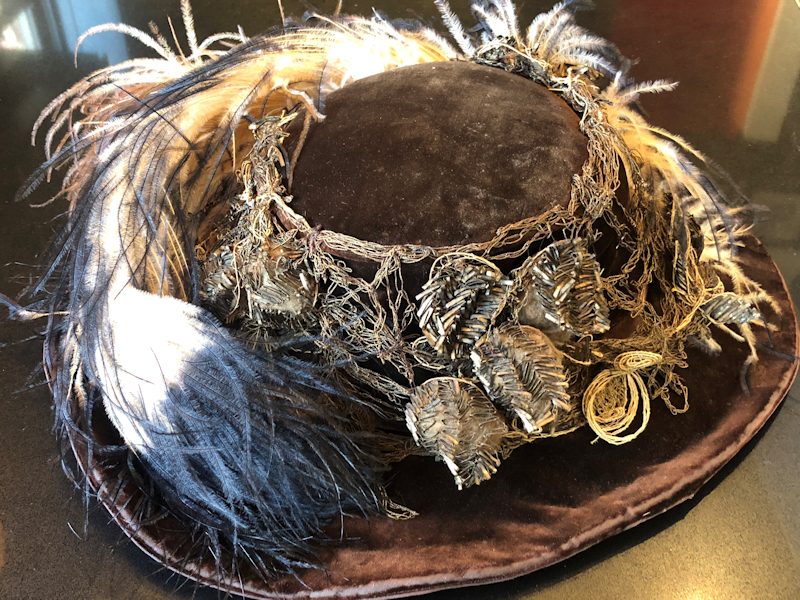
What I Wore
- Vintage 1910s tomato-red day suit with square wood buttons. Likely raw silk and linen blend, possibly home-made. New York Vintage, 117 W. 25th St.
- Cream silk satin high-necked blouse by my fantastic Finnish-American designer friend Andrea Thurlow! Andrea T New York, 147 W. 35th St. (by appointment only).
- Vintage 1910s brown velvet ostrich-plumed hat with unique metal filament detailing and nuts-and-leaves embellishment. New York Vintage.
- Yves St. Laurent 1910s-style cream and black leather lace-up pumps. The instep says, “Created for Bloomingdale’s by Yves St. Laurent.” New York Vintage.




Wonderful news, Karen. Let the fireworks and revelry begin!
Must confess I had no idea how many other nations were well
ahead of the U.S. in granting voting rights to women. Loved
the beautiful suffragette outfit.
Thanks, Lew! Coming from Canada, I was gratified that we beat the U.S.! Haha. Glad you loved the outfit too.
Hey Karen,
Thanks so much –great that your prep for and passage of the US citizenship test–can benefit your readers with this excellent summary of the movement towards women’s rights in this country! (And love your ‘performance artist’ suffragette outfit that allows you to feel and project that important history! )
The theme is especially timely in light of former President Biden’s recent move to complete the process for the ‘Equal Rights Amendment’:
https://www.nytimes.com/2025/01/17/us/politics/equal-rights-amendment-constitution-biden.html
Thanks, Pat! I appreciate you bringing this article to my attention. I had missed it. This will be a good postscript to my Sept. 2020 column about Fearless Girl and the ERA! https://karenqs.nyc/2020/09/01/fearless-from-eat-to-era/
I hope Biden’s statement will lead to the final step in certification.
congratulations …and you look fabulous as usual.
Thanks, Eileen!
Congratulations Karen! And thank you for the insights into the history of women’s rights. I’m sure if you were there during that time you’d be at the front of the lines fighting for change. I had a milestone of my own January 15th 2025, I celebrated my 70th birthday. Yikes! It comes with joy and a hint of trepidation. It’s a pretty big number. All I can say is so far so good.
Thanks, Bruce! I hope so! I’ve been to a few marches in my day! Including here in NYC, come to think of it. I marched to oppose Brett Kavanaugh’s appointment, and I marched to protect abortion rights.
Congratulations on your big milestone! The big seven-oh! That’s worth celebrating. I’m glad you’re still fit as a fiddle and living your dream!
Dear Karen,
First – congratulations on passing your citizenship test! Second, thank you for this mini history course – and for reminding us of our precious rights and freedoms. And thank you for your research – you cover so many topics. I found the Timeline on Global Suffrage particularly intriguing.
As always, you look fabulous and determined in your tomato-red suffragette suit and the smart 1910s-vintage chapeau. Maybe women may have won the right to vote even sooner had you been marching with them!
Dear Mrs. Reno, Thanks very much! I thought it was intriguing that New Zealand was first, and Australia second! And then Latvia, Finland, Denmark, and Canada! I hope that I would have been one of the women fighting for the right to vote back in the 1910s. It must have been an exciting time.